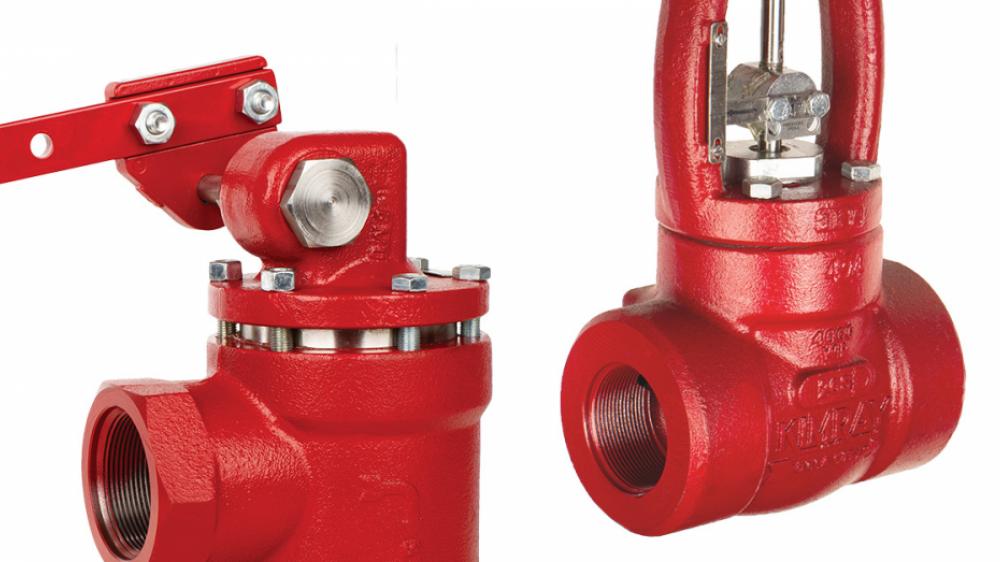Optimizing System Control with High-Performance Control Valves
Optimizing System Control with High-Performance Control Valves
Blog Article

Maximize Power Savings and Convenience With Advanced Structure Automation Controls
In the world of modern design and center administration, the assimilation of advanced structure automation regulates stands as an essential improvement. The merging of innovation and sustainability has birthed a brand-new era where power performance, convenience optimization, and operational streamlining are no much longer remote desires yet obtainable truths. By harnessing the power of automation, buildings can adapt, respond, and develop in manner ins which were once unimaginable. The potential for significant energy cost savings and enhanced convenience is not simply a guarantee yet an opportunity waiting to be met. This standard shift in structure monitoring holds the key to unlocking a world where ecological conscientiousness and resident well-being harmoniously exist side-by-side within the walls of our frameworks.
Energy Performance Advantages
Energy effectiveness benefits can significantly decrease energy intake and functional expenses in buildings. Energy-efficient systems, such as innovative structure automation controls, can optimize the usage of sources like air conditioning, home heating, and illumination, leading to reduced energy expenses over time.
Furthermore, enhanced energy efficiency can extend the lifespan of structure devices and systems. By running a lot more efficiently, HVAC systems, lighting fixture, and various other building parts experience much less deterioration, causing minimized upkeep and replacement prices. In addition, energy-efficient buildings usually regulate greater residential or commercial property worths and rental rates, supplying long-term financial advantages to owners.
Furthermore, power efficiency can enhance passenger comfort and productivity. Correctly controlled indoor atmospheres with optimum lighting and thermal problems produce a more favorable and pleasant workspace, bring about improved employee complete satisfaction and efficiency. On the whole, the energy effectiveness benefits related to innovative structure automation controls are complex, encompassing cost financial savings, environmental stewardship, and resident health.
Improved Convenience Control
Enhancing convenience control in building atmospheres requires an advanced assimilation of innovative automation systems for optimal occupant health. By using sophisticated building automation controls, facilities can tailor the indoor environment to meet the specific demands and choices of passengers. control valves.
By incorporating these sophisticated controls, structures can not just improve convenience however also boost energy performance by optimizing system procedures based on real tenancy and usage patterns. Eventually, prioritizing resident convenience with sophisticated automation systems leads to a much more delightful and healthier indoor setting.
Functional Performance Improvements

Additionally, the execution of real-time monitoring and analytics tools allows structure drivers to identify energy inadequacies and operational anomalies without delay. By continuously checking energy usage patterns and system performance metrics, changes can be made in real-time to maximize energy intake and ensure peak operational effectiveness. control valves. In addition, including need reaction methods right into structure automation controls can better enhance operational effectiveness by dynamically changing power use based on grid conditions and prices signals
Indoor Climate Optimization
Effective interior climate optimization is an essential facet of building automation controls, making sure passengers' convenience and well-being while optimizing power savings. By making use of innovative sensing units and controls, constructing automation systems can constantly keep an eye on and readjust temperature, humidity levels, air quality, and air flow to develop an ideal indoor environment. Maintaining comfy and constant conditions not just boosts passenger contentment however likewise increases productivity and total well-being.
Indoor environment optimization additionally plays a critical duty in energy efficiency. look at here By fine-tuning cooling, ventilation, and home heating systems based upon real-time information and occupancy patterns, building automation controls can significantly lower go to this web-site energy consumption - control valves. Applying techniques such as demand-controlled air flow and thermal zoning can assist minimize power waste while ensuring that each location of the structure gets the necessary conditioning.

Lasting Atmosphere Creation
Building automation regulates not just enhance indoor climate problems for power effectiveness and passenger comfort but also lay the structure for producing a sustainable environment via calculated administration of resources and systems. By incorporating sophisticated building automation modern technologies, such as sensors, actuators, and smart software program, facilities can keep track of and adjust power use in real-time to minimize waste and lower their carbon footprint. These systems enable anticipating maintenance, recognizing prospective issues prior to they escalate and maximizing devices efficiency to improve longevity and effectiveness.
Moreover, lasting environment production prolongs past energy monitoring to encompass water preservation, waste reduction, and indoor air quality enhancement. Structure automation controls can control water use, find leaks, and make sure proper garbage disposal practices, adding to overall sustainability initiatives. In addition, by regulating and keeping track of air flow and filtration systems, these innovations boost resident wellness and productivity while lowering energy usage connected with heating and cooling procedures.
Verdict
In conclusion, advanced structure automation regulates deal significant benefits in terms of power financial savings, convenience control, operational efficiency, indoor climate optimization, and producing a lasting environment. By applying these check that controls, buildings can achieve ideal performance while minimizing power intake and improving occupant comfort. It is apparent that using sophisticated automation modern technology is critical in enhancing building performance and creating a more sustainable future.
Energy efficiency advantages can considerably lower energy consumption and operational costs in buildings. Overall, the power efficiency advantages associated with advanced building automation controls are multifaceted, encompassing cost savings, environmental stewardship, and occupant well-being.
In addition, including demand reaction techniques into structure automation controls can additionally improve operational performance by dynamically readjusting power usage based on grid conditions and pricing signals.
Building automation manages not only maximize interior environment problems for power effectiveness and passenger comfort but also lay the structure for producing a lasting atmosphere via calculated management of systems and resources.In conclusion, progressed building automation regulates offer substantial advantages in terms of power financial savings, convenience control, operational performance, interior climate optimization, and developing a lasting atmosphere.
Report this page